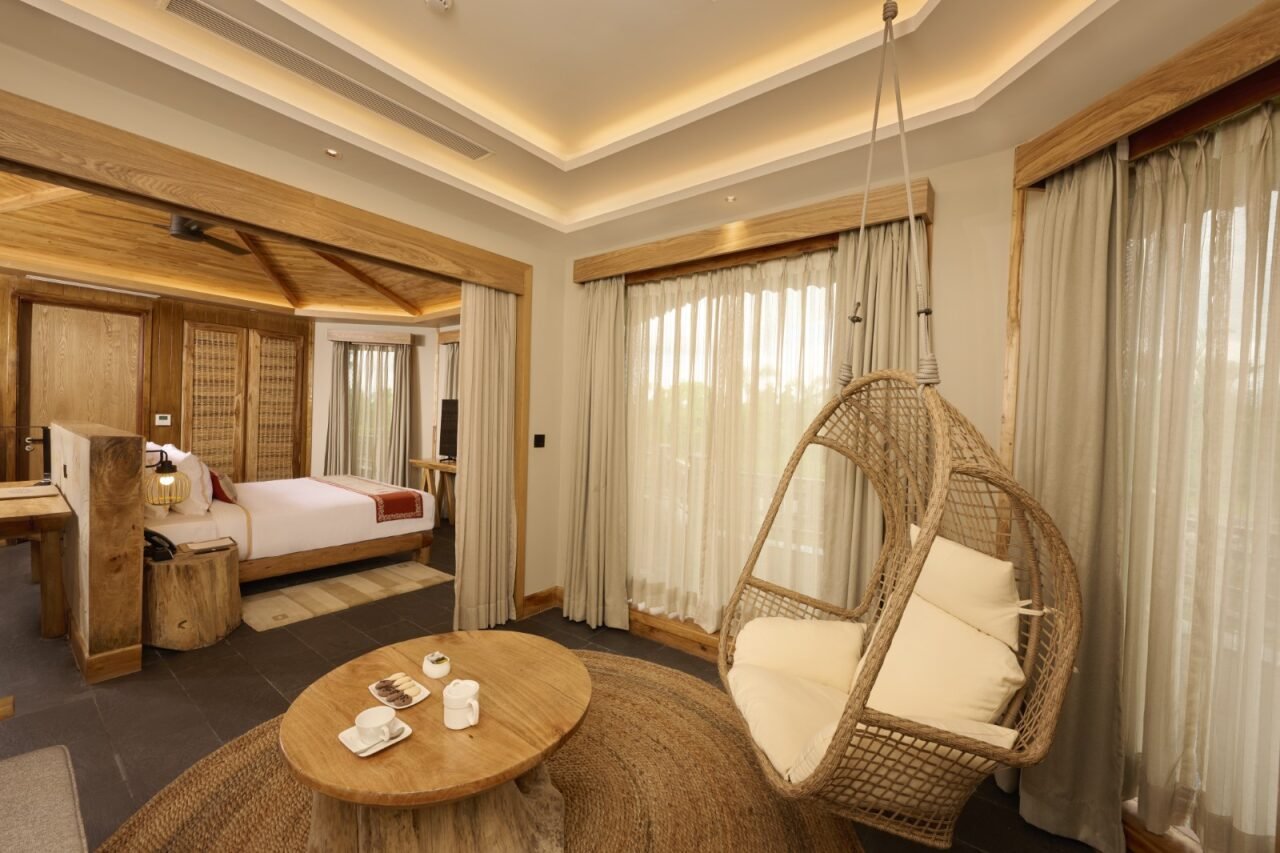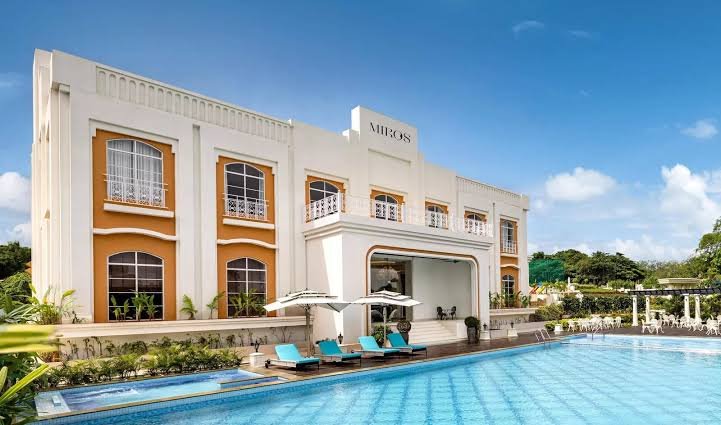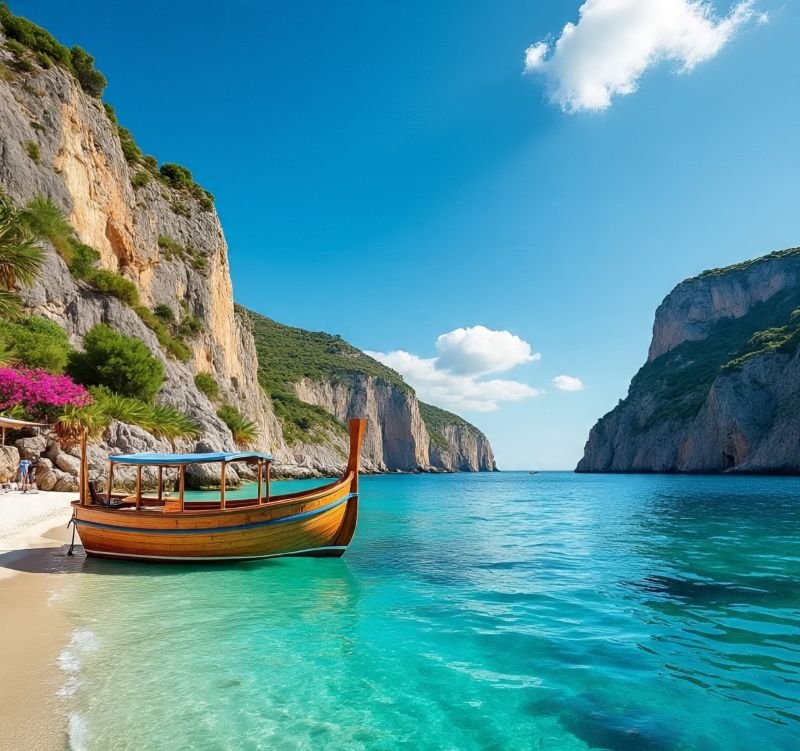Travel Trends
Nepal’s Royal Tulip opens Doors

In a major push to elevate Nepal’s hospitality landscape, Sarovar Hotels—part of the Louvre Hotels Group—has launched Royal Tulip Chitwan, the brand’s premium entry into the country. Situated at the edge of Chitwan National Park, a UNESCO World Heritage Site, the new resort seamlessly blends luxury, nature, and Nepali culture. The opening marks the debut of the Royal Tulip brand in Nepal and signals growing confidence in the country’s tourism potential.
Developed by KTM Hospitality (a KTM Group Holdings company), the resort spans over 4 acres and offers 65 upscale rooms and villas. Accommodation options include private Pool Villas, serene Water Villas, and unique Machan-style stays that elevate the guest experience. With a focus on nature-inspired design and top-tier comfort, the resort is positioned as an ideal destination for luxury travellers, wildlife enthusiasts, and honeymooners alike.
Royal Tulip Chitwan goes beyond just accommodation, offering world-class facilities like a luxury spa, fitness centre, swimming pool, and multiple gourmet dining options. Guests can enjoy meals at Majhighar, Forest Flame, the revolving deck Machan, or unwind at the stylish Tanavi Sports Bar. The emphasis is on immersive experiences rooted in local culture and cuisine, combined with global service standards.
Ajay K. Bakaya, Chairman of Sarovar Hotels, emphasised the strategic significance of this launch, noting Nepal’s increasing appeal among Indian and international tourists. He stated that Royal Tulip Chitwan is designed to offer a luxurious yet culturally authentic retreat. Rameshwar Shah of KTM Hospitality echoed this sentiment, highlighting the resort’s role in promoting Chitwan as a luxury eco-tourism hotspot.
With this debut, Louvre Hotels Group is expanding its South Asian footprint by targeting high-potential, experience-driven markets. Royal Tulip Chitwan is expected to become a landmark for leisure travel in Nepal, attracting guests seeking a tranquil yet luxurious escape surrounded by nature and culture.
Travel Trends
CIDCO Unveils 2054 Navi Plan

CIDCO has announced its Comprehensive Mobility Plan (CMP) for Navi Mumbai and the Navi Mumbai Airport Influence Notified Area (NAINA), with a vision extending to 2054. The long-term strategy is centered on developing a sustainable, efficient, and safe transport network that seamlessly integrates public and private transport options, including walking and cycling. With major infrastructure like the Navi Mumbai International Airport coming up, CIDCO aims to future-proof the region’s connectivity needs.
CIDCO Vice Chairman Vijay Singhal noted that rapid urbanisation and large-scale developments would significantly increase traffic flow, making the CMP essential. The plan seeks to unify existing transit systems—roads, metros, trains, and buses—under a cohesive approach. It also outlines methods to identify mobility gaps, streamline funding, and enhance traffic operations through modern management techniques.
However, the ambitious plan faces public skepticism. Residents have raised concerns over CIDCO’s track record, citing delays in Metro Line-1 and unresolved water supply issues in Panvel. These unmet promises have clouded public trust, putting additional pressure on CIDCO to demonstrate timely action.
The CMP also ties into the launch of the Navi Mumbai International Airport (NMIA), expected in September. With 95% of construction complete and immigration staffing approved, NMIA will begin operations with 30 daily flights, positioning Navi Mumbai as a key urban hub.
CIDCO’s dual focus on large-scale infrastructure and long-term planning could redefine mobility in Navi Mumbai. But its success will hinge on restoring credibility through delivery and sustained community engagement.
Travel Trends
House of Abhinandan Lodha launches.. Miros in Goa

The House of Abhinandan Lodha (HoABL) has taken a bold leap into the hospitality sector with the launch of its first luxury property—Miros Hotels and Resorts in Central Goa. Known for redefining land ownership, HoABL now ventures into curated lifestyle experiences, positioning Miros as a destination rooted in emotion, simplicity, and personal meaning. The property blends wellness, sustainability, and fine living in lush Goan surroundings.
Uniquely, Miros features the only vegetarian fine-dining restaurant in the region, along with vegan options, a wellness spa, gym, swimming pool, and both indoor and outdoor games. This thoughtful design aligns with the brand’s philosophy of offering experiences that inspire connection and discovery. The name “Miros” is inspired by “miracle” and the Greek word “os” meaning island—symbolising an island of wonder.
Abhinandan Lodha emphasized the company’s broader mission to reimagine legacy industries. He described Miros as not just a resort, but a memory-making destination, deeply integrated with their branded land developments. CEO Samujjwal Ghosh added that Miros brings emotional and experiential value to their real estate portfolio.
In parallel with the Miros launch, HoABL continues expanding into vertical real estate projects across Maharashtra, including a INR 2,000 crore integrated township in Naigaon. With Miros, HoABL blends land ownership with aspirational living—creating not just developments, but destinations that live in people’s hearts.
Travel Trends
Othonoi, a serene Greek island just twelve miles from Corfu, is quietly rising amid booming travel trends as a peaceful alternative to mass tourism. Could this be your next escape?

Sunday, August 3, 2025
Othonoi
It was conveyed that Othonoi, a little-known island located 12 miles northwest of Corfu, where the Ionian and Adriatic Seas meet, was gradually gaining recognition as a peaceful alternative to overcrowded travel destinations. Although it covers just 3.9 square miles, it was suggested that the island’s serene ambiance and natural beauty made it stand out sharply against Corfu, which reportedly now hosts over two million tourists annually. Observers indicated that this contrast was drawing interest from travelers weary of mass tourism.
The Crowd‑Driven Shift Toward Othonoi
It was explained that tourism to Corfu had grown substantially since 2019, with international flight arrivals increasing by 32% and ferry passenger numbers rising by 31%. Such figures were interpreted not merely as proof of popularity, but also as evidence of infrastructural strain and visitor overwhelm. In direct response, travelers were described as turning toward Othonoi for its tranquil pace—reachable via a short ferry ride, the island maintained a sense of seclusion and calm that Corfu could no longer guarantee.
Mythical Resonance and Cultural Depth
The narrative reportedly emphasized that Othonoi possessed deep-rooted connections to classical mythology. It was widely regarded as the island of Ogygia, where the nymph Calypso held Odysseus captive for seven years, according to Homer’s Odyssey. It was observed that the Cave of Calypso, situated near Aspri Ammos Beach, still exists and continues to intrigue visitors with its legendary resonance. The continuing presence of cypress trees—noted by Homer for their scent—was said to evoke an ancient sensory experience, merging past and present in a unique way.
Local Character and Seasonal Dynamics
Sources indicated that despite its compact size, Othonoi was divided into two principal regions—Ano Panta and Kato Panta—with more than 20 small settlements distributed across the terrain. It was reported that Ammos, the island’s port, served as the central hub, offering modest lodging, dining, vehicle rental options, and cultural stop‑offs. Other villages mentioned, including Chorio (the capital), Dafni, and Damaskatika, were said to offer deeper insight into island life. The summer population reportedly peaked at slightly under 400 residents, while winter saw a dramatic decline—an ebb that was said to contribute significantly to the island’s reflective tranquility. Reportedly, arrival options included a ferry from Corfu, taking around three hours, or a shorter service from Agios Stefanos, lasting approximately one hour.
Secluded Beaches and Panoramic Heights
It was noted that Othonoi was home to a range of untouched coastal spots, many accessible only by boat. Among the beaches named were Molos, Kamini, Kanoula, Kontoskes, and notably Aspri Ammos, celebrated for its white sands and turquoise waters. The Cave of Calypso, again highlighted, was reported as a key convergence of myth and environment. For those inclined toward elevation and view, ascend Mount Imerovigli, the island’s highest point at 1,296 feet, which was said to provide sweeping views over both the Ionian and Adriatic Seas, as well as nearby Diapontian Islands. The climb was described as offering not just beautiful vistas, but also a potent sense of solitude and reflection.
Emerging Traveler Preferences
It was suggested that as popular destinations became more saturated, global travelers—particularly from Europe and the UK—were reorienting their priorities. Their preferences were said to include:
- Lower visitor density, enabling more personal and immersive experiences
- Cultural or historical significance, offering meaning beyond sun and sand
- Reduced environmental impact, aligning with eco-conscious values
- Authenticity over commercial spectacle
Such preferences were interpreted as part of a broader shift toward micro‑tourism, wherein travel experiences are rooted in small-scale, sustainable, and locally grounded engagement rather than mass-market packages.
Broader Industry Implications
Commentators conveyed that the quiet rise of Othonoi might be emblematic of a larger transformation in how travel is approached and marketed. It was posited that as interest in less commodified, more meaningful destinations grows, other small islands and overlooked areas worldwide may come into focus. It was proposed that nations might begin to highlight such hidden gems, promoting a more balanced tourism model that prioritizes heritage preservation, cultural respect, and slower forms of enjoyment over high-density visitor numbers.
The Symbolic Value of Thoughtful Travel
Finally, it was remarked that Othonoi could serve as a powerful symbol of what modern travel could—and perhaps should—be again. In a time when many peaceful places are being overtaken by mass tourism, Othonoi’s quiet beauty, mythological resonance, and low-impact charm were seen as representing a return to simpler, more meaningful travel. Observers asserted that as attention to such destinations quietly increased, they might inspire a new approach to global tourism—one valuing quality, cultural integrity, and community-led experiences—offering a template for a future of travel that is thoughtful, respectful, and deeply rewarding.
-

 Brand Stories2 weeks ago
Brand Stories2 weeks agoBloom Hotels: A Modern Vision of Hospitality Redefining Travel
-

 Brand Stories1 week ago
Brand Stories1 week agoCheQin.ai sets a new standard for hotel booking with its AI capabilities: empowering travellers to bargain, choose the best, and book with clarity.
-

 Destinations & Things To Do2 weeks ago
Destinations & Things To Do2 weeks agoUntouched Destinations: Stunning Hidden Gems You Must Visit
-

 Destinations & Things To Do1 week ago
Destinations & Things To Do1 week agoThis Hidden Beach in India Glows at Night-But Only in One Secret Season
-

 AI in Travel2 weeks ago
AI in Travel2 weeks agoAI Travel Revolution: Must-Have Guide to the Best Experience
-

 Brand Stories4 weeks ago
Brand Stories4 weeks agoVoice AI Startup ElevenLabs Plans to Add Hubs Around the World
-

 Brand Stories3 weeks ago
Brand Stories3 weeks agoHow Elon Musk’s rogue Grok chatbot became a cautionary AI tale
-

 Asia Travel Pulse4 weeks ago
Asia Travel Pulse4 weeks agoLooking For Adventure In Asia? Here Are 7 Epic Destinations You Need To Experience At Least Once – Zee News
-

 AI in Travel4 weeks ago
AI in Travel4 weeks ago‘Will AI take my job?’ A trip to a Beijing fortune-telling bar to see what lies ahead | China
-

 Brand Stories4 weeks ago
Brand Stories4 weeks agoChatGPT — the last of the great romantics












You must be logged in to post a comment Login